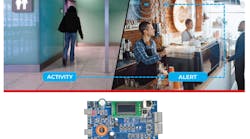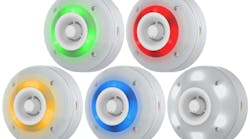Business owners will never consider leaving their property unsecured, but they may need to consider which hardware they plan on using to get the job done. Properly designed and certified exit locks and alarms are vital in not only ensuring security, but also safety and longevity.
“Any time that something is going on a door, you’re subjected to temperature change, vibration and slamming,” said Don Baker, vice president of engineering for Ingersoll Rand Security Technologies and a longtime member of the Builders Hardware Manufacturers Association (BHMA). “You’re being subjected to situations that if you purchase a product that hasn’t been well tested, it won’t be able to operate when you really need it most.”
BHMA is the only U.S. organization accredited by the American National Standards Institute (ANSI) to maintain, improve and develop product standards for architectural hardware. Currently, there are 33 ANSI/BHMA standards — covering everything from hinges to locks to door controls in the builders hardware category — with several more in development.
BHMA recently updated the ANSI/BHMA A156.29 American National Standard for Exit Locks, Exit Alarms and Alarms for Exit Devices.
BHMA offers certification for a number of hardware product categories. Certification indicates that a product has been formally tested or witnessed by an independent laboratory and complies with the established criteria for a specific standard. In the case of builders hardware, certification indicates that products meet the recognized ANSI/BHMA standard for durability, strength and performance.
“Safety and security is always a top priority for builders hardware,” said Ralph Vasami, executive director for BHMA. “With strict review processes from BHMA’s technical committees and standards continuously being revised on a regular schedule, the end user can be assured that the product has undergone the most stringent tests for the operation of the mechanism and the finishes to function properly.”
ANSI/BHMA A156.29 was last updated in 2002. Among the changes, the updated standard includes a revised description of the test door to coincide with the latest ANSI/BHMA A156.4 Closers standard. Tests for preload, key cylinder operation and outside pull have been added, and functions EO431 and EO451 were reinstated.
“Industry developed standards and a rigorous certification process are critical to our industry,” said Bob Hasty, exit devices project manager for DORMA Architectural Hardware. “Offering a fully transparent process to make sure our products meet and exceed those standards is not only a requirement but an expectation of building owners and architects.”
Alarm options are provided with exit devices that conform to the ANSI/BHMA A156.3 standard. Hasty described the versatility of integrating an alarm with an exit device.
“Whether it is an unauthorized entry or exiting, delayed egress, or a fire alarm, it’ll accommodate any number of life/safety situations,” Hasty said. “That’s one of the beauties of the device.”
Baker, who has been employed by Ingersoll Rand for 21 years, explained how problems really start in the decision making for business owners. Baker said problems arise when an owner selects an option that may not be code compliant. Choosing a product that could be faulty puts everyone and everything in peril.
“Often times, exit alarm solutions aren’t always selected when they should be,” Baker said. “So, rather than putting an alarm on a door to know when it’s been compromised, they might put a padlock on the door to just prevent exit.”
Hasty full-heartedly agreed with Baker and added, “It sends chills down my spine when I hear padlocks and chain locks are being used.”
Hasty described a horror story about a fire that broke out at the Beverly Hills Supper Club in Southgate, Ky., during Memorial Day weekend, 1977. More than 160 people died when it was discovered that the building did not meet fire code requirements, and that emergency exits were chained shut.
“We’ve seen situations where product selections have compromised life and security by using inferior, non-certified products,” Hasty said. “It’s not so much new construction projects, but replacement situations in the aftermarket.”
For more information, or to purchase copies of ANSI/BHMA standards, please visit BHMA’s Web site at www.buildershardware.com. Purchased standards are available as printed documents or as electric files (PDF) for immediate download. You can also order standards by phone by calling 800-699-9277.





